|
VATICAN CITY - 26 April 2016, Pope Francis received Cardinal Angelo Amato, sdb, Prefect of the Congregation for the Causes of Saints in a private audience. In the course of the audience, the Holy Father authorized the Congregation to promulgate decrees regarding:
1 Comment
VATICAN CITY - At 10:00 a.m., in the Concistory Hall of the Vatican Apostolic Palace, Pope Francis held an ordinary public consistory during the celebration of midmorning prayers for the canonization of Blesseds:
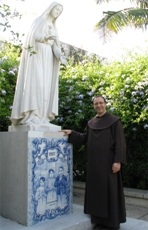 Carmelite Father Romano Gambalunga, is the new Postulator leading the Cause of Beatification of Sister Lúcia. He was born in Trento in 1970. He made his Solemn Profession as a Discalced Carmelite in 1996 and was ordained a priest in 1997. He graduated in Spiritual Theology at the Institute of Spirituality at the Faculty of Theology Teresianum in Rome, and in Philosophy and Spirituality at the Pontificio Ateneu S. Anselmo in Rome, where he also earned a doctorate in the History of Theology. He was appointed Postulator General of the Order of Discalced Carmelites on June 6, 2012, succeeding the previous Postulator P. Iidefonso Moriones. In July 2013, he moved to Portugal, and took charge of the Diocesan phase of the Process, to deepen his knowledge about the development of the Cause of Beatification of Sister Lúcia and visit the places where she lived, Fátima and Coimbra. It was concluded that the work of the Cause of this Servant of God is very large, given to her long life, her many writings and with the many issues that she was involved and related to. In his opinion, the Process is to be developed in the best possible way, since a large part of the work has been done which is necessary for the completion of this diocesan phase. He expressed the desire that soon, the Cause could reach Rome, there, to give a continuation to its development. P. Romano also took knowledge of two cases that may be considered miracles, that will be analyzed and studied in Rome, by competent experts. SOURCE: http://www.lucia.pt/ 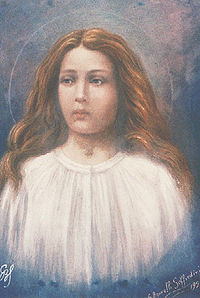 by James Likoudis Mr. Likoudis is the former President of Catholics United for the Faith. In many of his addresses, Pope John Paul II has noted that the 20th century has been perhaps the bloodiest and most murderous century in the history of mankind, giving the Church the most martyrs in her 2,000-year history. It should be a matter of profound reflection that the 20th century may be said to have begun with the martyrdom in 1902 of a young girl, Maria Goretti–not yet 12 years of age–who did not hesitate to give her life for the virtues of virginity and chastity so cherished by the Catholic Church. In a beautiful homily commemorating the 100th anniversary of the birth of St. Maria Goretti, Pope John Paul II quoted St. Paul: "God chose what is foolish in the world to shame the wise, God chose what is weak in the world to shame the strong, God chose what is low and despised in the world, even things that are not, to bring to nothing things that are, so that no human being might boast in the presence of God" (1 Cor. 1:27-29). The Successor of Peter continued: Yes, God chose her. Yes, God has clothed her with honor. He chose and clothed her with honor a simple little country girl who was born poor. He clothed her with honor by the power of His Spirit. "The natural person does not accept what pertains to the spirit of God–he does not accept because "he cannont understand it"; rather, "to him it is foolishness" (1 Cor. 2:14). On the contrary, Maria Goretti understood. She was able to "accept what pertains to the Spirit of God." She did not flee from the Spirit’s voice, from the voice of her conscience. She did not give in. She rather chose death. Through the gift of fortitude, the Holy Spirit helped her to ‘judge’–and to choose with her young spirit. She chose death when there was no other way to defend her virginal purity. . . . Now Maria Goretti is forever in the glory prepared by God for the martyrs, already prepared in past ages, at the time of the Roman persecutions, by Agnes, Lucy, Agatha, Cecelia, and so many others. At the beginning of our century, this glory touched her, too. We thank the Blessed Trinity for this young life and for the martyrdom which crowned it. Through her life and heroic death, the Son of Man was glorified at the beginning of our century. The life and example of this young virgin-martyr can teach us much concerning the truth that every young person can attain a high degree of holiness, as we have seen with two more recent blesseds, Jacinta and Francisco Marto, to whom Our Lady of Fatima appeared in 1917. They were but nine and ten years old. St. Dominic Savio, who was the student of St. John Bosco, was only 15. St. Dominic Savio’s motto "death rather than sin!" was to be actually realized in the bloody martyrdom of St. Maria Goretti, who suffered 14 stab wounds from her 19-year-old attacker, Alessandro Serenelli, inflamed with lust. Her reply to previous overtures to commit sins of impurity had always been "No!" A young peasant girl who could not read or write, Maria remained fully conscious of the instructions she had received for her First Communion: "When we commit sin, we renew the Passion of Christ." During the evening of that First Communion, when a special family celebration was held, her mother Assunta had told her, "My darling, today Jesus has claimed you as His. Never offend him, ever." On that fatal day, July 5, 1902, when confronted by Alessandro, the young girl had repeatedly cried out to her assailant, "No! E peccato! Dio non lo vuole!" "No! It is a sin! God forbids it! You will go to hell!" On her deathbed a day later, in her agony, she forgave her murderer. In answer to the priest who asked her: "Maria, Jesus died while forgiving the penitent thief at His side. Do you forgive with all your heart your attacker and murderer?" "Yes! Yes!" she replied, "For the love of Jesus, I forgive him, and I want him to be with me one day in heaven!" The conversion of the morose, hardened, and embittered Alessandro a few years later was to prove one of the young saint’s greatest miracles. Alessandro’s own account reveals how on October 10, 1910, as he lay on his prison bunk, Maria Goretti appeared to him in a dream, dressed in dazzling light and handing him white lilies which turned into flames in his arms. His striking conversion was accompanied by an admission of guilt and of his victim’s innocence and virtue. A once unrepented murderer would now accept his continued imprisonment lasting 18 more years as the occasion for expiating his crime. He would be often heard saying, "I hope for salvation, since I have a saint in heaven praying for me." Our age needs heroic role models for youth who are caught in a destructive "culture war" in which no values are considered worthy of belief or commitment. Catholics have been warned about the powerful intellectual currents threatening all Christian values involving the dignity of the human person, and especially the dignity of women. The Roman Pontiffs from St. Pius X at the turn of the century to Pope John Paul II have repeatedly insisted on the need to uphold the dignity of the human person in the face of attacks against Christian sexual morality. Patrick Mitchell, addressing the ideological tampering with gender that has become endemic in our time, has written: In the last century, the western world has turned a corner and entered an era appropriately called "post-Christian." Whole nations have abandoned the Christian faith in favor of no religion at all. Where faith has survived, it has been pruned of its inconvenient aspects. This is most true of Christian teaching on the sexes. The Christian mystery of the man and the woman, handed down from the apostles and preserved entire by the saints of every age, has become a scandal to modern man, a stumbling block that causes the weak in faith to falter. Just as the divinity of the crucified Christ was too much for the ancient Greeks to believe, so the humanity of the fallen Eve is too much for many modern men and women to accept. Centuries of Christian teaching on the relationship between the sexes have been abandoned and forgotten. The harmful effects of "women’s liberation" and now "children’s liberation" from family and Church have yet to be grasped. Radical feminist ideology with its revolutionary notions of sexual equality and freedom directly conflicts with Christian teaching and even distorts our understanding of God. Such ideology is not that of the saints and blesseds of the Church, who understood the necessity of chastity for self-mastery and self-discipline. The virtue of chastity lived in every state of life (single, married, priesthood, and consecrated religious) enables the person to live by the Holy Spirit. Our Lord Jesus Christ loved the virtue of holy purity, and the saints safeguarded this virtue in order to be pleasing to God. St. Maria Goretti knew the importance of chastity for union with God and its necessity for the wholesomeness of both personal and social life. She knew instinctively as a child of God what St. Paul taught: "For this is the will of God, your sanctification . . . that each one of you know how to control his own body in holiness and honor, not in the passion of lust like heathen who do not know God" (1 Thess. 4:3-5). She had grasped in the depth of her soul the lessons of the Catechism as taught by her parents and her village priest–that Christians belong to God totally, body and soul, flesh and bones, with all their senses and faculties. She knew that she was "God’s temple" and that sins of impurity defiled that temple and endangered one’s salvation. She was aware of the beauty of sacramental marriage (she doubtless expected to marry some day and have a family), but she also knew priests and women religious who had freely chosen celibacy and virginity for the sake of the kingdom of God. In every age, the saints of God have proven that they were God’s servants by their lives of faith and purity of soul. In St. Maria Goretti, youth have a heavenly patroness who, in Pope John Paul’s words, is "a model of Christian life," "a model of authentic holiness," and "the Agnes of the 20th century." Not yet 12 years of age, she was a countercultural sign to a world in the process of rejecting God and genuine love. She continues to radiate the light of Christ amidst the decadence and impurities of the modern world, remaining an inspiration to both parents and youth to live the Christian life and, if necessary, to suffer martyrdom in defense of Catholic morality. CUF president emeritus Jim Likoudis writes from Montour Falls, NY. This article was originally published in Lay Witness magazine, July/August 2002. As 2012 draws to a close, we ask you to remember Ad Jesum Per Mariam Catholic Lay Ministry when making your charitable donations. During this "Year of Faith," Pope Benedict is calling the faithful, first, to personal conversion, and then to evangelization – both of which are part of our mission. By supporting AJPMCLM , you help evangelize the world – and what could be more important! Please remember to keep us between your gas and electric bill!" You can donate now by logging onto https://ajpm.weebly.com/support-us.html for more details VATICAN CITY - Today, 20 December 2012, Pope Benedict XVI received in a private audience Angelo Cardinal Amato, sdb, prefect of the Congregation of the Causes of the Saints. During the audience, the Holy Father authorized the Congregation of the Causes of Saints to promulgate the following twenty-four decrees regarding:
- a miracle, attributed to the intercession of Blesseds Antonio Primaldo and Companions, laypersons of the diocese of Otranto, killed in odium fidei on 13 August 1480 in Otranto (Italy); cult confirmed on 14 December 1771; martyrdom recognized on 06 July 2007; - a miracle, attributed to the intercession of the Blessed MarÍa Laura DE JESÚS Montoya Upegui (in religion, Laura of Saint Catherine of Siena), founder of the Congregation of the Missionary Sisters of the Immaculate Virgin Mary and Saint Catherine of Siena; born on 26 May 1874 in Jericó, Antioquía (Colombia) and died on 21 October 1949 in Belencito, Medellín, Antioquía (Colombia); beatified on 25 April 2004; - a miracle, attributed to the intercession of the Blessed Anastasia Guadalupe García Zavala (in religion, María Guadalupe), cofounder of the Handmaids of Saint Margaret Mary and of the Poor; born on 27 April 1878 in Zapopan, Jalisco (Mexico) and died on 24 June 1963 in Guadalajara, Jalisco (Mexico); beatified on 25 April 2004; - a miracle, attributed to the intercession of the Venerable Servant of God ANTONIO FRANCO, ordinary of the territorial prelature of Santa Lucia del Mela; born on 26 September 1585 in Naples (Italy) and died on 02 September 1626 in Santa Lucia del Mela, Messina (Italy); declared venerable on 14 January 2011; - a miracle, attributed to the intercession of the Venerable Servant of God José Gabriel del Rosario Brochero, priest of the diocese of Córdoba; born on 16 March 1840 in Santa Rosa de Río Primero, Córdoba (Argentina) and died on 26 January 1914 in Villa del Tránsito, Córdoba (Argentina); declared venerable on 19 April 2004; - a miracle, attributed to the intercession of the Venerable Servant of God CRISTÓBAL LÓPEZ DE VALLADOLID OREA (in religion: CRISTÓBAL OF SAINT CATHERINE), professed priest, Third Order Regular of Saint Francis and founder of the Congregation of the Franciscan Hospitallers of Jesus the Nazarene; born on 25 July 1638 in Mérida, Badajoz (Spain) and 21 July 1690 in Córdoba (Spain); declared venerable on 28 June 2012; - a miracle, attributed to the intercession of the Venerable Servant of God ZOFIA CZESKA-MACIEJOWSKA, founder the Congregation of the Virgins of the Presentation of the Blessed Virgin Mary; born in 1584 in Budziszowice, Kazimierski (Poland) and died in Kraków (Poland) on 01 April 1650; declared venerable on 27 June 2011; - a miracle, attributed to the intercession of the Venerable Servant of God MAŁGORZATA SZEWCZYK (in religion: ŁUCJA), founder of the Congregation of the Daughters of the Sorrowful Mother of God ‒ Seraphic Sisters; born ca. 1828 in Shepetivka (a.k.a. Szepetówka), Khmelnytskyi (Ukraine) and died on 05 June 1905 in Nieszawa, Aleksandrów (Poland); declared venerable on 19 December 2011; - the martyrdom of the Servant of God Miroslav Bulešić, priest of the diocese of Poreč i Pula; born on 13 May 1920 in Čabrunići, Svetvinčenat, Istarska (Croatia) and killed in odium fidei on 24 August 1947 in Lanišće, Istarska (Croatia); - the martyrdom of the Servants of God JOSÉ XAVIER GOROSTERRATZU JAUNARENA and 5 COMPANIONS, professed priests and religious of the Congregation of the Holy Redeemer (Redemptorists); killed in odium fidei between 1936 and 1938 in the religious persecution during the Spanish Civil War; - the martyrdom of the Servants of God Ricardo Gil Barcelón, professed priest of the Congregation of the Sons of Divine Providence, born on 27 October 1873 in Manzanera, Teruel (Spain), and Antonio Arrué Peiró, layperson of the archdiocese of Valencia and postulant of the Congregation of the Sons of Divine Providence, born on 04 April 1908 in Calatayud, Zaragoza (Spain), both killed in odium fidei on 03 August 1936 in El Saler, Valencia (Spain); - the martyrdom of the Servant of God MANUEL Sanz Domínguez (in religion, Manuel of the Holy Family), professed priest of the Order of Saint Jerome, restorer; born on 31 December 1887 in Sotodosos, Guadalajara (Spain) and killed in odium fidei between 06 and 08 November 1936 in Paracuellos de Jarama, Madrid (Spain); - the martyrdom of the Servants of God Josefa Pilar García Solanas (in religion, María Montserrat) and 8 COMPANIONS, professed religious of the Order of Minim Nuns, along with LUCRECIA GARCÍA SOLANAS, layperson of the archdiocese of Barcelona, killed in odium fidei on 23 July 1936 at the Sant Genís dels Agudells highway, Horta, Barcelona (Spain); - the martyrdom of the Servants of God MELCHORA ADORACIÓN CORTÉS BUENO and 14 COMPANIONS , from the Company of the Daughters of Charity of St. Vincent de Paul; killed in odium fidei between 1936 and 1937 in the religious persecution during the Spanish Civil War; - the heroic virtues of the Servant of God PaUL VI (Giovanni Battista Montini), supreme pontiff; born on 26 September 1897 in Concesio, Brescia (Italy) and died on 06 August 1978 in Castelgandolfo, Rome (Italy) ; - the heroic virtues of the Servant of God Francesco Saverio Petagna, bishop of Castellamare di Stabia, founder of the Congregation of the Religious Sisters of the Sacred Hearts; born on 13 December 1812 in Naples (Italy) and died on 18 December 1878 in Castellamare di Stabia, Naples (Italy); - the heroic virtues of the Servant of God JUAN JOSÉ JAIME Bonal Cortada, priest of the archdiocese of Zaragoza, founder of the Congregation of the Sisters of Charity of Saint Anne; born on 24 August 1769 in Terrades, Girona (Spain) and died on 19 August 1829 in Zaragoza (Spain); - the heroic virtues of the Servant of God LOUIS-MARIE BAUDOUIN, priest and founder of the Congregation of the Sons of Mary Immaculate and of the Congregation of the Ursuline Sisters of Jesus of Chavagnes; born on 02 August 1765 in Montaigu, Vendée (France) and died on 12 February 1835 in Chavagnes, Vendée (France); - the heroic virtues of the Servant of God Giovannina Franchi, founder of the Nursing Sisters of Our Lady of Sorrows; born on 24 June 1807 in Como (Italy) and died there on 23 February 1872; - the heroic virtues of the Servant of God Luisa Aveledo y AVELEDO (in religion, Marcelina of Saint Joseph), founder of the Congregation of the Sisters of the Poor of Saint Peter Claver; born on 18 June 1874 in Caracas (Venezuela) and died on 16 November 1959 in Barranquilla, Atlantico (Colombia); - the heroic virtues of the Servant of God Claudia Russo, founder of the Congregation of the Poor Daughters of the Visitation of the Blessed Virgin Mary; born on 18 November 1889 in Naples (Italy), and died there on 11 March 1964; - the heroic virtues of the Servant of God Rosa Elena Cornejo PAZMIÑO (in religion, MarÍa Francisca of the WounDs), founder of the Congregation of the Franciscan Missionary Sisters of the Immaculata; born on 11 December 1874 in Quito (Ecuador) and died there on 24 October 1964; - the heroic virtues of the Servant of God KLARA SZCZĘSNA (in religion LUDWIKA), cofounder of the Congregation of the Sister Servants of the Most Sacred Heart of Jesus; born on 18 July 1863 in Cieszki, Lubowidz, Żuromin (Poland) and died on 07 February 1916 in Kraków (Poland); and, - the heroic virtues of the Servant of God Joaquina María Mercedes Barceló Pagés (in religion, Consuelo), cofounder of the Congregation of the Augustinian Sisters of Our Lady of Consolation; born on 24 July 1857 in Sarrià, Barcelona (Spain) and died on 04 August 1940 in Manila (Philippines). 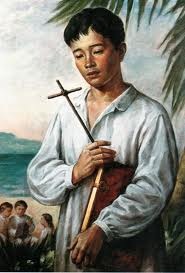 _The pope has recognized a miracle attributed to the intercession of each one of them. He has not officially called for their canonization but, he's expected to do so next fall.Benedict XVI has approved the canonization of seven blessed. Educated by the Jesuits in the Visayas, a section of the Philippines. Pedro could read, write and speak Visayan, Spanish, and Chamorro, paint, draw, sing, and worked as a carpenter. Teenage catechist who worked with Spanish Jesuit missionaries to the violent Chamarros in the Ladrones Islands (modern Marianas) in 1668. Because he was a Christian on a mission to catechize the Chamorros, and Baptisms, Calungsod was murdered by two natives. He died trying to defend Father Diego Luis de San Vitores. _ 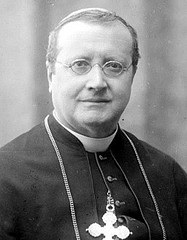 October 22, 2011. (Romereports.com) Guido Maria Conforti wanted to be a missionary but at first, this wasn't possible because he suffered from sleepwalking and epilepsy. However, he would not give up and in 1895 he founded the congregation Xaverian missionaries, dedicated to preparing missionaries. Gerardo Caglione Xaverian missionaries "His thought was this: I can not go on missions, but I can prepare and send others to proclaim the Gospel.” At that time, the pope assigned the congregation the task of evangelizing in China, the country Saint Francis Xavier dreamed of reaching. Today, the community of Xaverian Missionaries is made up of about 800 people with locations in 20 countries. 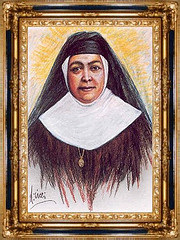 October 21, 2011. (Romereports.com) The Spanish nun Bonifacia Rodriguez will be remembered for her fight to help poor women to learn a trade. Before becoming a nun, she was actually a rope maker. She went on to found her own religious order known as the Servants of St. Joseph, right in the local shop where she worked. It was in 1874, in the midst of the industrial revolution. From that moment, she and the Jesuit Francisco Butinyà devoted themselves to helping poor women to make a decent living and discover their faith in everyday life. The new order allowed the nuns to dress like the artisans of the country. There was no dowry asked of them to enter the convent, where they would work side by side with lay people. It was a project that did not please everyone. 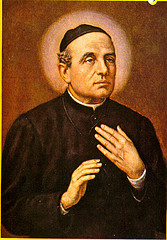 St. Luigi Guanella October 21, 2011. (Romereports.com) Italian Luigi Guanella was a champion for the defense of life. Born in 1842, he founded two congregations dedicated to serving those who were disabled and abandoned by their families. Behind every person he would see a gift from God, which he said, has value in itself. He defended the dignity of the elderly, sick, and the mentally and physically disabled, who were abandoned or badly treated by their families. Pino Beneditos San Giuseppe Rehabilitation Center (Italy) “One day, the bishop of Como showed up because he had to speak with him about their activities, their charitable projects, and Don Guanella was with the mentally disabled, with his 'good kids'. He was playing cards with them and to make them happy he finished the game, but had to leave the bishop in the waiting room.” |
Archives
May 2016
Categories
All
|

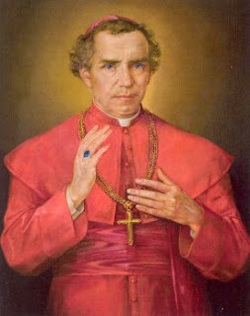
 RSS Feed
RSS Feed
